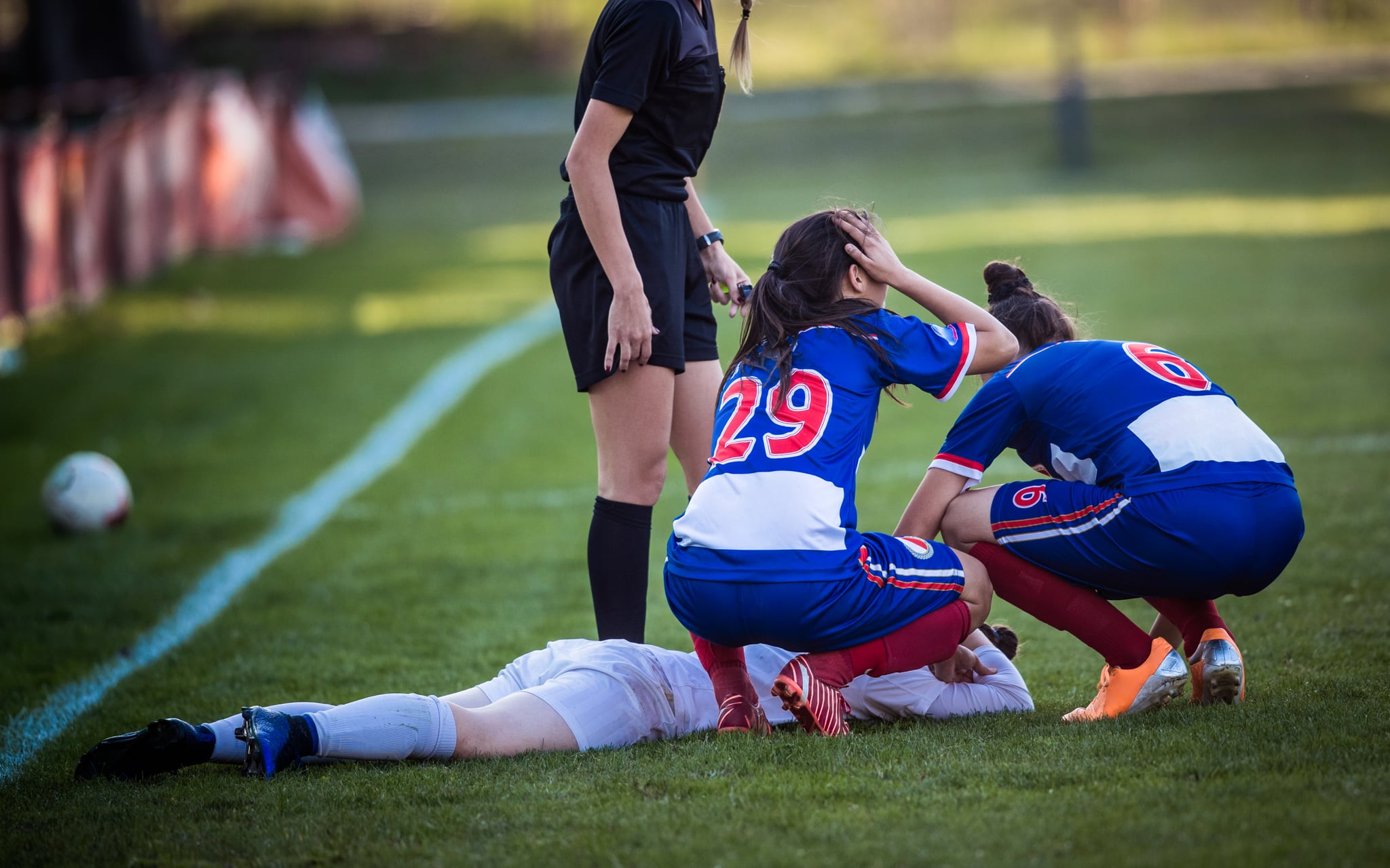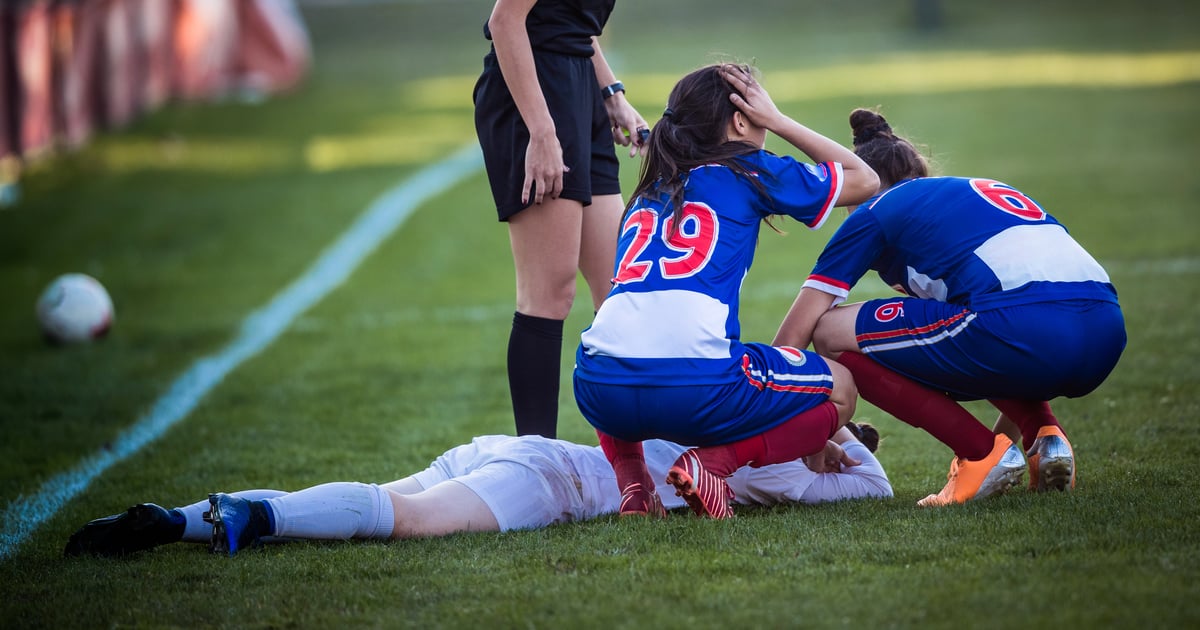
With both professional and college women’s sports gaining more attention, there’s never been a better time to talk about how training can impact women differently.
Some injuries can be a lot more common in women, leading researchers to explore the role hormones may play in fitness. For example, studies have shown that women are two to eight times more likely than men to tear their anterior cruciate ligament (ACL), which runs diagonally through the knee and connects the thigh and shin bones. Other knee injuries, ankle sprains, shoulder problems, stress fractures, and plantar fasciitis also affect women more than men.
One question that’s often raised: can your menstrual cycle affect your susceptibility to injury? The jury is still out, and, like many women’s health issues, more research needs to be done. One oft-cited 2021 study found that muscle and tendon injuries occurred twice as often during the late follicular phase (right before ovulation), with the study authors writing, “It seems that hormonal fluctuations throughout the menstrual cycle alter values such as laxity, strength, body temperature, and neuromuscular control, among others. This fact causes women to constantly adapt to hormonal variations, which exposes them to a higher risk of injury.” But given the lack of additional research, many sports doctors warn against drawing definitive conclusions from any one study for now.
“There is so much more to learn.”
Still, many athletes know that they feel and perform differently depending on where they are in their menstrual cycle. It’s worth noting that given that tech companies and governments may be tracking user data, it’s important to be mindful of any period-tracking apps or devices you use in the context of the current laws and political climate of your state.
To discuss existing research and what athletes should know about periods and sports injuries, we spoke with Maria E. Reese, MD, a sports medicine attending physician at the Shirley Ryan AbilityLab and assistant professor of physical medicine and rehabilitation at the Northwestern University Feinberg School of Medicine.
Read on to see what she had to say about how your menstrual cycle could impact your risk of sports injury.
POPSUGAR: We know that ACL tears can be as high as eight times more common in women than men. What are the other common injuries that occur more frequently in women?
Maria Reese: There are some injuries that are more common among women versus men, and this is due to multiple, intertwined reasons. The most often discussed are ACL injuries, yet women have been shown to also have higher rates of bone stress injuries, osteoarthritis, sacroiliac joint pain, ankle instability, pelvic floor dysfunction, and concussion, among others. However, there are other injuries that are more common among male athletes.
“I view a patient’s menstrual cycle as a lens into their body’s overall energy state.”
There have been numerous studies (and books) looking at the science behind sex differences in sport and injury. Sex differences in male and female physiology, including body composition (i.e., females typically have 10 percent more body fat than their male counterparts) and cardiopulmonary differences (females have smaller heart and lung sizes and less hemoglobin, the oxygen carrying part of the blood), can play a role in injury risk. Additionally, males and females have differences in anatomy and biomechanics such that females have less total cross-sectional area of muscle, increased muscular flexibility and ligamentous laxity versus males, and a wider pelvis, which can also lead to difference of strength and stability and may predispose women to different injuries than men.
There is definitely more to an injury risk profile than just where in her cycle a female is!
PS: How can a player’s menstrual cycle affect their vulnerability for injuries?
MR: There are two aspects for consideration: 1) hormonal fluctuations within the menstrual cycle and how those fluctuations may affect injury risk, and 2) changes in the length of the menstrual cycle or losing one’s menses while training.
We know that the hormonal fluctuations throughout the menstrual cycle can alter our musculoskeletal system’s laxity, strength, and neuromuscular control, among other implications. Recent studies have suggested women may be at greater risk for sports injuries at specific times in their menstrual cycle (specifically, during the late follicular phase, just prior to ovulation). However, it is important to remember that correlation does not equal causation — and the causal relationship between changes within the hormonal milieu and injury has not been proven. Additional research is needed to better understand how to interpret and apply this association.
However, several studies have repeatedly shown that women who are “late” for their period or who “lose” their period during training have a heightened injury risk overall. I find this insight to be more valuable and clinically applicable. Relative Energy Deficiency in Sport [also known as RED-S, when athletes are not getting enough fuel through food] suggests that low energy availability may lead to an increased risk of injury in athletes. When energy availability is limited, important physiological processes such as menstruation are sacrificed in order to conserve energy — resulting in a longer time between periods or loss of periods.
If one’s body does not have enough energy to maintain key physiologic processes, one is at a heightened risk for sports injuries of various types — including, but not limited to, bone, joint and ligamentous injuries. It is also important to note that if an athlete is on contraception (e.g. birth control pills), they may still experience breakthrough bleeding yet may actually be energy 1deficient.
PS: The fact that athletes are more vulnerable when they’re skipping/late/overdue for periods — I can’t help but think that may be linked to a low weight or or overtraining. That would be as much or more of a factor than just the phase in the cycle, no?
MR: As a physician, I view a patient’s menstrual cycle as a lens into their body’s overall energy state. If their body is not getting enough energy to maintain menstrual function (an important and basic physiologic function), then their body, including the muscles and bones and other organ systems, are likely also negatively affected. This interconnectedness of the menstrual cycle, bone health, and energy availability has been termed the Female Athlete Triad (we now instead consider the more encompassing RED-S model).
Previously, it was thought that only those with eating disorders were at risk, but now we know that often athletes do not intentionally restrict their intake but instead do not appreciate their energy expenditure and therefore are not meeting their own needs. One needs not to have an eating disorder to have suboptimal energy availability and therefore be at risk for injury or other detrimental effects of low energy.
PS: What advice would you give athletes who are training with respect to their menstrual cycle?
MR: It is important to remember that hormones are just one of the many possible factors that can influence injury risk. Furthermore, research regarding injury risk and menstrual cycle hormonal fluctuations is in its infancy. Therefore, currently it is not recommended that the data regarding menstrual phase correlation to injury risk be used to inform exercise practice/participation or specifics of training.
In order to minimize risk overall, it is important to maintain strength, maintain flexibility, optimize technique, avoid overtraining, cross train, and optimize your energy availability — hydrating, fueling, and getting rest!
I do recommend monitoring menstrual cycle length in order to better identify if/when an athlete’s menstruation is “late,” as we know that has implications for increased injury risk (RED-S syndrome), as well as implications for lifetime accumulation of bone density.
It is worth noting that all the research regarding menstrual cycle hormonal fluctuations, menstrual cycle duration, and injury risk are looking at women who are not on any form of oral or hormonal contraception (birth control pills, IUD). Therefore, we cannot make any assumptions of risk for females on contraception.
Ultimately, there is so much more to learn. A lot more research is needed before we can know how to apply this possible correlation of menstrual cycle hormonal changes to exercise practice and participation.
This interview has been lightly edited for length and clarity.
Image Source: Getty / skynesher
